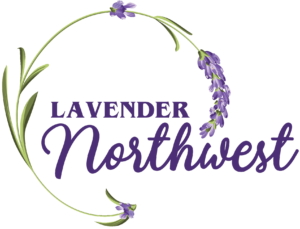If you want to incorporate lavender into your garden, winter is the perfect time to start planning which cultivars you want to grow. You can create a wash of lovely color and fragrance by planting a variety of different lavender plants that will add dramatic interest, and attract many beneficial insects like bees, butterflies and other pollinating insects that are helpful to our environment. Lavender foliage is evergreen and will add color, fragrance and texture to the landscape in several shades of green to silver- gray, even when the plants are not blooming. There are even a few cultivars that have variegated leaves, all year long. Even when lavenders are not blooming, they can provide structural interest to a garden. They are often grown in rows to create low borders to line garden spaces. The tallest lavenders are planted to create striking borders along driveways and to form fragrant hedges in the landscape.
Generally, lavenders do not need a lot of care. They do require enough water to help them get established during the first season they are planted in the garden. Lavender needs to be planted in full sun, and in soil that drains very well. They should not be crowded too close together or too close to other perennial plants so they have plenty of room to grow. After the first season, in the garden, lavenders will thrive with very little care, and they are virtually pest-free. Most hardy lavender plants will require seasonal pruning to hold their shape and remain healthy over a long period of time.
The first lavenders to bloom in late spring are the Lavandula stoechas cultivars (sometimes called “Spanish lavender” varieties). They usually grow quickly and start blooming by the end of April and continue to bloom throughout May. The flower spikes look like small pine cones with small purple flowers and have long bright “bunny ear” bracts on top. They bloom for at least a month before they fade. If the whole plant is cut back and pruned well, it will bloom again in late summer or early fall. Some of the L. stoechas cultivars are hardy in areas with very mild winters. They are suitable for growing in large containers or barrels on sunny decks or patios, as well as making a stunning display when massed in the landscape or used as a focal point in the garden.
Most Lavandula angustifolia cultivars (often called “English lavender” varieties) are hardy and will survive winters in the Pacific Northwest as long as they receive full sun and excellent drainage. There are over 100 different named cultivars available! Within this large group of lavenders, there is a wide range of plant sizes and flower colors to choose from. There are dwarf and semi-dwarf lavenders that grow between 12” and 18” and larger lavenders that grow between 18” and 30” tall. They produce flowers that range in color from light violet to dark purple-blue, and there are several pink and white flowering lavenders that will add beauty, fragrance and contrast in the landscape. There is also a large selection of hybrid Lavandula x intermedia cultivars to consider, blooming slightly later than the angustifolias, on considerably larger plants with longer flower spikes. These are only slightly less hardy than the angustifolias, and can provide a great deal of drama in your garden. With so many Lavandula cultivars, it is possible to grow and enjoy a selection of plants that will bloom at different times from late spring to late summer and sometimes into early fall.
Contributed by
Chris Mulder
Barn Owl Nursery
Edited & formatted by
Michael Lemmers
RavenCroft







